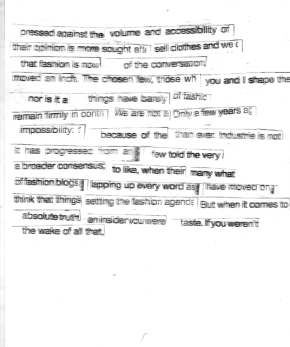
The cut-up technique is a technique in which a text is cut up and then arranged to create a new text.
The technique can be traced back to its use by the Dadaists in the 1920s – after the Dadaists used the technique, it become more widely known in the late 1950s and early 1960 by William S. Burroughs, a short story writer, American novelist, painter and spoken word performer. Since Burroughs’ popularisation of the technique, it has since been used in a wide variety of situations and contexts.
The Actual Technique

There are two parts of the technique, the cut-up and the fold-in.
Cut-up involves taking a finished text and cutting it into pieces with single or few words on each part – these pieces are then rearranged to form a new text.
Fold-in involves taking two sheets of text (usually with the same linespacing), folding each sheet in half vertically and combining it with the other. You then read across the resulting page.
History
The technique occurred during a Dadaist rally in the 1920s. Tristan Tzara, a French avant-garde and Romanian poet, offered to create a poem on the spot by pulling words out at random from a hat. Prior to this, the technique had been widely published in an issue of 391 entitled ‘dada manifesto on feeble love and bitter love’ with the subtitle ‘TO MAKE A DADAIST POEM’.
The technique has also had an influence on music. From the early 1970s, musician David Bowie had used the cut up technique to create some of his song lyrics. The technique was also used by Kurt Cobain and others.
Here’s a few examples of the cut-up technique:

One of David Bowie’s ‘cut-ups’ – for the song Blackout (http://www.youtube.com/watch?v=Uz7vhDHPlyk)
and here’s our example:
To be added.